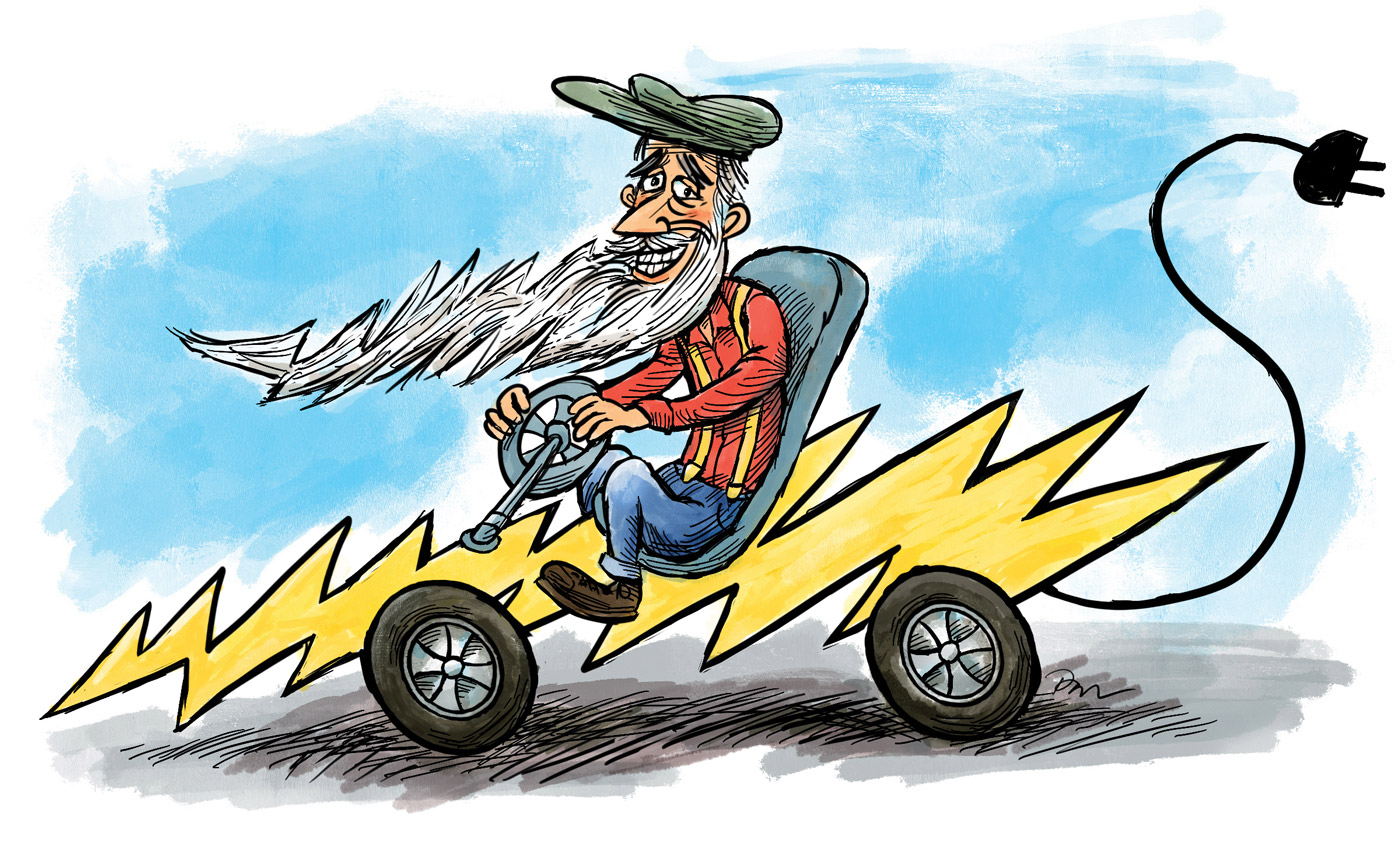I have not loved a car for decades. That old VW bug did have some fun times with me, but cars are tools to move us around, so I save love for family, friends, the planet, and such. But I do like my electric car a lot. In fact, everybody who rides in or borrows my electric car likes it: the cost of fuel, the quiet ride, the feel of the vehicle. Much of the criticism of EVs comes from people who have not tried one.
Let’s start with the physics: Four-fifths of the energy contained in gasoline or diesel goes out the tailpipe or radiator as waste heat. Only 20% is used to move the vehicle. In an electric vehicle, 90% of the energy in the battery goes to moving the vehicle while only 10% is wasted during charging or operation. Internal combustion vehicles brake by rubbing pads against discs, leaving behind metallic dust and worn parts. Electric cars brake by turning the motor into a generator, recharging the battery and stopping the car simultaneously. I have used the friction brakes half a dozen times in the year since I got an all electric car. (Electric vehicles do have brakes for emergencies, you just don’t need them much.)
Fueling my electric vehicle at home is easy and cheaper than gas. In the hydro-powered Pacific Northwest, it’s like getting 200+ mpg. Even when charged with energy from coal or natural gas plants, EVs are more efficient and produce fewer emissions than gasoline cars. The used battery components in an EV are simple to recycle, and recent research has shown that refurbishing the most expensive part of the batteries can make them more efficient than new ones.

Yes, there are problems with EVs: environmental concerns, affordability, and (sometimes) convenience. Mining lithium for batteries has consequences. Siting a lithium mine involves environmental and cultural impact discussions (something rarely, if ever, required of fossil fuel extraction operations). But pumping, transporting, refining, and dealing (or, so far, not dealing) with the pollution that fossil fuel combustion produces is a lifelong part of the internal (infernal?) combustion engine.
The least-expensive gas-powered car does have a lower up-front purchase price than the least-expensive EV, but its maintenance, fuel, and environmental costs are much higher over time. And right now there are generous state and federal subsidies and tax credits making electric car purchases less expensive. (Gasoline and diesel production are heavily subsidized, and have been for about 100 years.) Every home can be a charge point. But road trips are a little slower, and if the still-somewhat-sparse charging network is busy, you may have to wait for your turn to charge. The main roads are well-stocked with charging stations, but rural areas still have more gas stations than charging stations, for now.
Because most of my charging is done at home (because most of my travel is within 150 miles of home), I have spent far less time fueling my EV than I did my old gasoline car. Most charging stations lack rest rooms and window-washing squeegees, but I (a retired guy) have found travel more relaxing when I have to stop for 30 minutes every three hours. Unfortunately (or fortunately, if you are not retired) the EV charging speed is going up, and the range is increasing by leaps and bounds and miles.
Look, driving less is always the least-polluting strategy. Switching to EVs doesn’t stop the process of resource consumption or the consequences of high energy consumption. But while we work on that, it does make it better.


